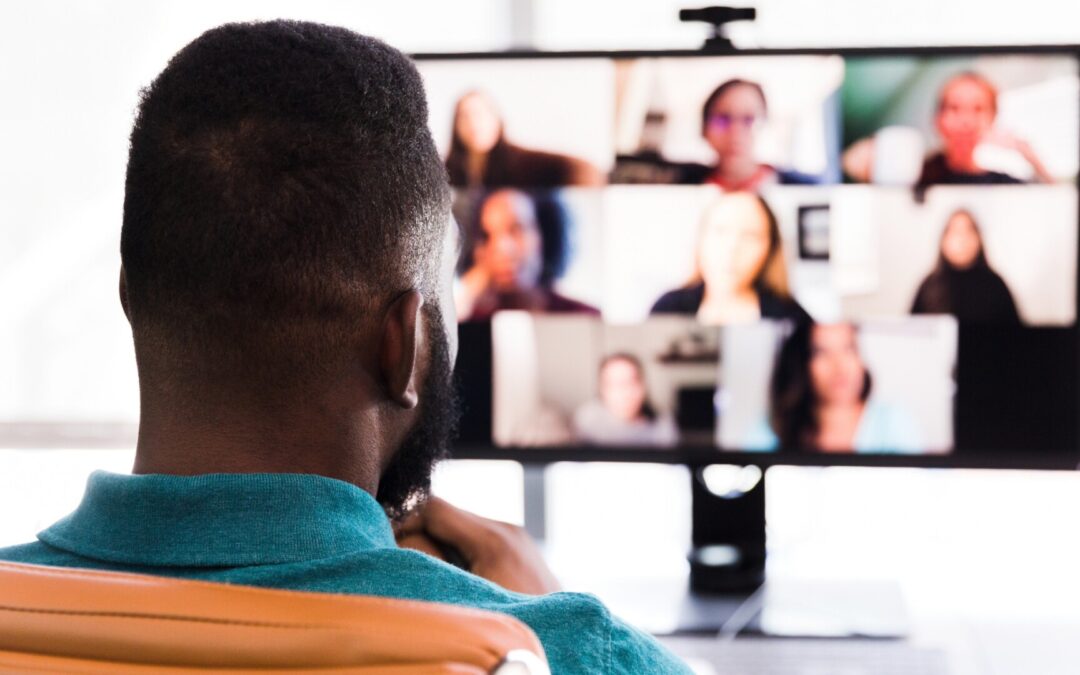Collaboration in a global marketing setting can be challenging on the best of days. Our guest blogger, Jen Kelly of New Initiatives Marketing shares her views on how to rise to the challenge.
Delivering a workshop can be one of the best ways to share your knowledge and get in front of your future clients. While the content of your talk needs to be relevant, helpful and insightful, you must put just as much care into the execution of the event as you do into developing the content. Over the past few weeks, my strategy partner, Pamela Campagna of Blue Sage Consulting and I presented to the small business clients of Middlesex Savings Bank. Pamela was onsite at each location in the greater Boston area. I joined in online from Toronto, live via Skype video.
Here are some tips that helped us to deliver a polished and relevant workshop four times over four weeks. I hope they can help you deliver your next best workshop.
Open doors for others
1. Be a good partner
In our case, with Pamela in the room and me on video, it was easier for the audience to make an immediate connection with her. She said hello to everyone, was able to chat and shake hands before and after the workshop. Ensuring that we both got enough airtime in front of the audience was important. Also, it was important that we didn’t confuse the audience. We did this by scripting our presentation to be really clear in the beginning, middle and end what each of us focused on. We worked to make it crystal clear that Pamela’s expertise is strategy – work with her if you’re creating or revamping your strategy. Mine is implementation and execution – work with me if your challenge is implementing and executing your marketing strategy.
2. Be good to your sponsor
Our sponsor was Middlesex Savings Bank. Their marketing team had enough on their plate without taking on the promotion of our workshop series. Knowing this, we did our best to make this easy for them by ensuring they had all the elements (photos, bios, logos, copy) to create their mailings. We also suggested content, subject lines, times of mailing. We developed a survey to send out once someone registered for the workshop. This survey helped prepare the attendee for the content and prepared us to meet the expectations of the audience. Make it as easy as possible for your sponsor to help promote your workshop.
3. Be good to the audience
People have taken the time to attend your workshop. Ensure you have something for everyone to do next. For those who will sign up to buy right away – be ready to take an order. For those who want to try out what they’ve just learned from you – have take-a-ways like worksheet that spell out the first few steps they need to take to get started on their own. For those that need to think a little bit more about what you’ve just presented – encourage them to connect with you on LinkedIn, to download your presentation slides, and to check out the resources (industry articles) you’ve provided to learn more. Each person will move at their own pace, be ready to match it.
Before and after
4. Rehearse
Pamela and I were both comfortable public speaking. What was new to us was working together. We put the time in to rehearsing and found out how to work with our different presentation styles.
5. Debrief
Make the time to debrief after each session. As I was on video I had such a different perspective than Pamela did. We made the time to do this the same day of each workshop so that the experience was fresh in our minds. We’d talk about what worked well, what didn’t and what to adjust. Sometimes this was a 10 min conversation. Other times, longer. Always valuable.
Expert help
6. Get the tech right
Oh technology. We love you. Except when you don’t work – for no reason. We did our best to test everything including four site checks at each location to understand the setup and technical requirements unique to each place. We also brought Pamela’s colleague onsite to manage the tech set up, and to be responsible for any backup fixes we’d need if the wifi failed for any reason. Doing so allowed us to focus on the audience and our content, knowing we had a pro in charge of all the technology.
7. Be ready for your close-up
For me, presenting on camera was a big step. I knew I wanted to present well and frankly was really uncomfortable on video. So I got some coaching. Jaeny Baik who works with business leaders to get over themselves (essentially!!) was my secret weapon. She worked with me to learn how to present on video. While I have a long way to go, her coaching made me feel good. I learned some of the basics with lighting, camera angles, and scripting to look and sound professional. Without her coaching as a first step, I’d still be shy and uncomfortable on video and probably would not have agreed to do this workshop – what a missed opportunity that would have been. More and more opportunities exist for delivering your expertise in a workshop setting. While you’re sure to know your content inside out, these tips are meant to ensure the implementation and execution of your workshop goes smoothly. Good luck!
What tip would you add to the list?
Need help with the implementation and execution of your next workshop? Contact Jen.
Want one marketing execution tip per month? Sign up for Jen’s newsletter.
